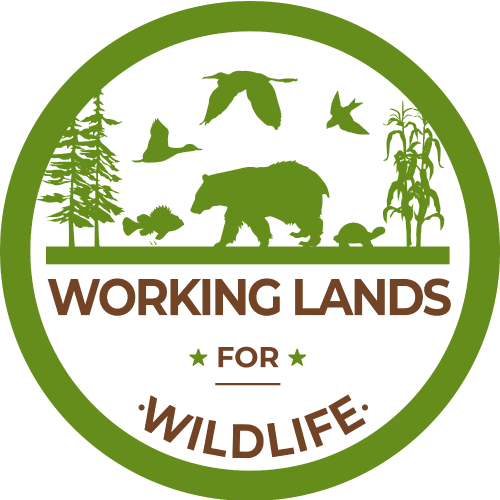-
National Wildfire Coordinating Group
-
by
Tab Manager
—
published
Dec 30, 2020
—
last modified
Apr 18, 2024 01:28 PM
—
filed under:
Training,
WLFW,
Wildland Fire,
Online Training,
National Wildfire Coordinating Group,
NWCG
National Wildfire Coordinating Group’s catalogue provides specific training for NWCG positions.
Located in
Training
/
Online Training Programs and Materials
-
Wildland Fire Lessons Learned Center
-
by
Tab Manager
—
published
Apr 09, 2021
—
last modified
Apr 18, 2024 01:24 PM
—
filed under:
Wildland Fire,
Wildland Fire Lessons Learned Center,
WLFW,
Training,
Online Training
Wildland Fire Lessons Learned Center provides community discussion boards, podcast episodes, videos, and other resources aimed at making wildland fire performance and organizations safer.
Located in
Training
/
Online Training Programs and Materials
-
LANDFIRE YouTube Channel
-
by
Tab Manager
—
published
Apr 09, 2021
—
last modified
Apr 18, 2024 01:23 PM
—
filed under:
Wildland Fire,
Training,
LANDFIRE,
WLFW,
Online Training
The LANDFIRE YouTube channel includes videos on topics including LANDFIRE applications and case studies, webinars, and tutorials.
Located in
Training
/
Online Training Programs and Materials
-
World of Wildland Fire YouTube Channel
-
by
Tab Manager
—
published
Apr 09, 2021
—
last modified
Apr 18, 2024 01:23 PM
—
filed under:
Wildland Fire,
WLFW,
Training,
World of Wildland Fire,
Online Training
The World of Wildland Fire YouTube channel includes videos on fuels, fire behavior, and fire ecology.
Located in
Training
/
Online Training Programs and Materials
-
NACo County Wildfire Playbook
-
by
Tab Manager
—
published
Dec 30, 2020
—
last modified
Apr 18, 2024 01:27 PM
—
filed under:
National Association of Counties,
Training,
WLFW,
NACo,
Online Training,
Wildland Fire
A County Leadership Guide to Help Communities Become More Fire Adapted and Learn to Live with Wildland Fire.
Located in
Training
/
Online Training Programs and Materials
-
NFPA Firewise USA
-
by
Tab Manager
—
published
Apr 13, 2021
—
last modified
Apr 18, 2024 01:24 PM
—
filed under:
Training,
Firewise,
WLFW,
Online Training,
Wildland Fire,
NFPA
Every year, devastating wildfires burn across the United States. At the same time, a growing number of people are living where wildfires are a real risk. While these fires will continue to happen, there are things you can do to protect your home and neighborhood as well as your family’s safety. The Firewise USA® program is here to help you get started.
Located in
Training
/
Online Training Programs and Materials
-
The Nature Conservancy Conservation Gateway Fire Training
-
by
Tab Manager
—
published
Dec 16, 2022
—
last modified
Apr 18, 2024 01:20 PM
—
filed under:
The Nature Conservancy,
Training,
WLFW,
Online Training,
TNC,
Wildland Fire
The Nature Conservancy has conducted over 100 fire training sessions since 1986. Having served more than 3,700 students to date, the Conservancy has earned a reputation for its innovative, experiential approach to learning and dynamic, interagency cadre and student bodies.
Located in
Training
/
Online Training Programs and Materials
-
Southern Fire Exchange Publications
-
by
Tab Manager
—
published
Apr 11, 2021
—
filed under:
Wildland Fire,
Southern Fire Exchange,
SFE,
Training Publication,
Fact Sheet
The Southern Fire Exchange disseminates fire research results and information through fact sheets, the Fire Lines newsletter, presentations, and research syntheses. The topics covered in SFE products are identified through needs assessments, surveys, and by the SFE Advisory Board. SFE also works with partners to identify critical fire science research needs for the Southern region.
Located in
Training
/
Publications, fact sheets, training materials
-
Joint Fire Science Program Fire Science Exchange Network
-
by
Tab Manager
—
published
Apr 11, 2021
—
last modified
Apr 11, 2021 10:52 PM
—
filed under:
Wildland Fire,
Training Publication,
Fact Sheet,
FireScience.gov
The Joint Fire Science Program (JFSP) Fire Science
Exchange Network is a national collaboration of 15 regional
fire science exchanges that provides the most relevant,
current wildland fire science information to federal, state,
local, tribal, and private stakeholders within ecologically
similar regions. The network brings fire managers,
practitioners, and scientists together to address regional fire
management needs and challenges.
Located in
Training
/
Publications, fact sheets, training materials
-
Consortium of Appalachian Fire Managers & Scientists
-
by
Tab Manager
—
published
Apr 11, 2021
—
filed under:
FireScience.gov,
Wildland Fire,
CAFMS,
Training Publication,
Consortium of Appalachian Fire Managers & Scientists
The Consortium of Appalachian Fire Managers & Scientists (CAFMS) is one of 15 knowledge exchange networks supported by the Joint Fire Science Program. Our goal is to promote communication among fire managers and scientists in the Appalachian Mountains region. CAFMS is largely successful because of a strong relationship between the U.S. Forest Service Southern Research Stations and The Nature Conservancy's Fire Learning Network
Located in
Training
/
Publications, fact sheets, training materials


